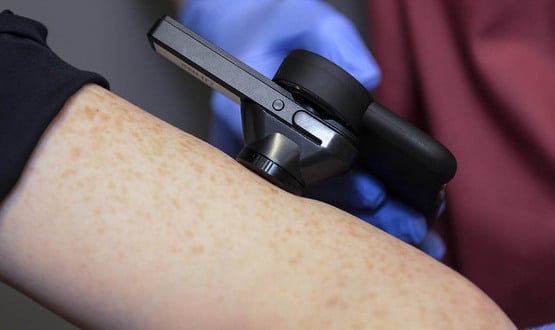West Suffolk identifies data errors in discharge summaries
- 21 June 2017

West Suffolk Hospitals NHS Foundation Trust has identified technical problems with its Cerner EPR, known locally as e-Care, leading to inaccuracies in discharge letters automatically sent to local GPs.
The trust has launched an on-going investigation into the data errors in discharge letters, which it initially rated as a potentially ‘catastrophic/major harm’ risk, though the trust says no patient is believed to have been harmed. Manual checking of discharge summaries has been introduced while the investigation is carried out.
West Suffolk is one of 16 hospital trusts that have been prioritised for national health IT investment through the GDE programme, to become a reference site for other NHS trusts to follow. The trust went live with its new Cerner EPR last May, in a programme locally known as e-Care.
The trust told Digital Health News the discharge letter problems stem from inaccuracies in information contained within some discharge summary letters issued to GPs, created by unspecified technical issues. “This is due to a combination of technical issues within the automated distribution processes and workflows”, a trust spokeswoman explained.
“At the point the issue was identified we immediately implemented a manual process to ensure the correct information was being set to GPs.”
The spokesperson added: “We are working with our digital partner, Cerner, to implement a long-term solution”.
Cerner said in a statement: “West Suffolk NHS Foundation Trust identified some inaccuracies in the information recorded on discharge summaries. These happened due to combination of complex workflows and automated custom scripts. Cerner has already taken action and is working closely with the trust to agree a process to complete the workflow and eliminate the sources of inaccuracies.”
In addition to the problem with data in discharge summaries, West Suffolk has also been left unable to provide some key performance reports since implementing eCare and is having to manually compile others.
These reporting problems, combined with capacity issues, contributed to the trust breaking the 52 week limit for treatment in the case of five ear nose and throat patients, according to April board papers.
In early May, a trust spokeswoman said that a definite date cannot be provided on when all 52-week breaches will be resolved as further patients may be identified.
“The estimated incomplete referral to treatment (RTT) performance has been impacted by capacity issues in several services and it is extremely disappointing that a number of patients have waited over 52 weeks for treatment.”
The trust’s May board papers says that data estimates have been provided for: “Falls per 1000 Beds days and Falls with moderate/severe harm/death per 1000 bed days”, “VTE: Completed risk assessment” and “Gynaecology (F14) 30-day readmissions”.
For the last two items, information data has “not been possible to collate due to the transfer over to e-Care”.
The trust spokeswoman said that reporting issues due to data quality were “anticipated”, and that the trust was working with Cerner to correct this and it has “made significant progress to improve reporting”.
The spokesperson added: “Patient safety is always our priority and we use other means to monitor and audit quality standards in line with national guidance to identify learning to support quality improvement.”
Cerner said in a statement: “It is normal and expected, when implementing a new Electronic Health Record, to identify data quality issues which can affect reporting. It is also important to remember that West Suffolk NHS Foundation Trust not only implemented a new Electronic Health Record but also a new data warehouse. Some reports initially needed to be completed manually as we worked through the post implementation.”
Two full reports on discharge summaries and reporting issues have been presented to the board on 26 May, but both were done in a private session.
e-Care is a 10-year digital programme begun with Cerner EPR deployment on the early May bank holiday last year.





2 Comments
I cannot speak for West Suffolk but St George’s version appears just to compile a set of already established data from the patient record (the definition of which I understand was agreed between the Trust and their local GPs). That data is then assembled into a letter format, which is dispatched outbound electronically at the point of discharge. The content is, therefore, very much up to the doctors/nurses/etc.
Now, whether staff feel they are able to capture the required clinical information in an intuitive and convenient way, is a whole other matter. I strongly suspect that that is, in fact, at the root of West Suffolk’s problem.
It looks as though Cerner expects to complete discharge letters – which are transfer of care documents – *without* any human intervention or checking.
Is this really a feature of the Cerner EPR installed here?
If so,
1. how informative is the discharge letter, including future plans and follow-up?
2. How complete are the clinical records held in the Cerner EPR?
3. What is the AI which decides what is relevant – and irrelevant – for the discharge? (I sincerely hope it isn’t just a print-out of the entire record!)
4. Can GPs receiving these letters have any confidence that the information contained in them is accurate and complete in all cases?
And the old question: when – not if – a patient comes to harm or receives sub-optimal treatment due to EPR problems, who should be held responsible?
Comments are closed.